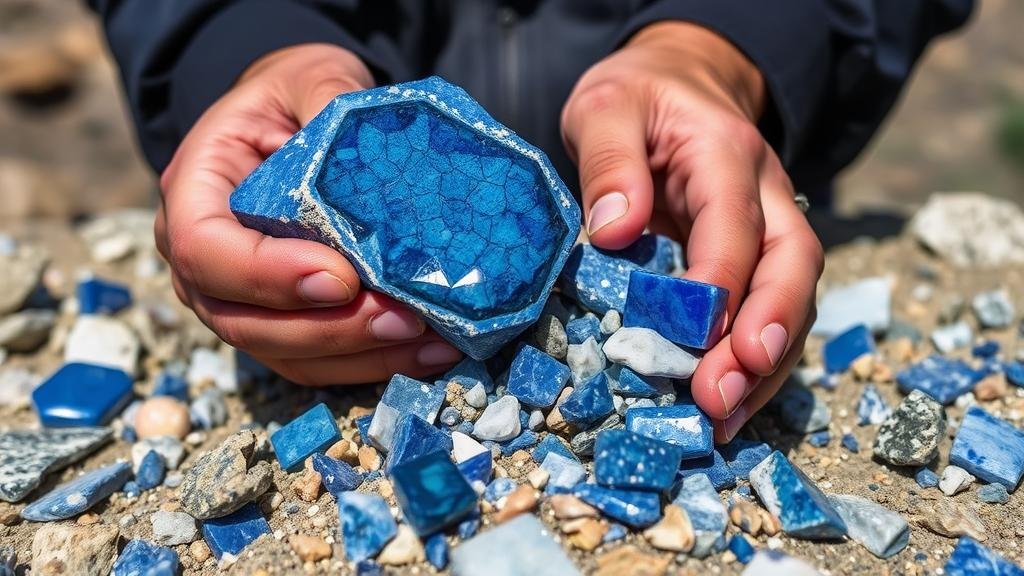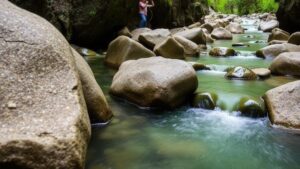Searching for lapis lazuli in Afghanistan’s remote mountains, used in art and jewelry for millennia.
Searching for Lapis Lazuli in Afghanistan’s Remote Mountains
Lapis lazuli, a deep blue metamorphic rock, has captivated the human imagination for thousands of years. Found primarily in Afghanistans remote mountains, this precious stone has been prized for its vibrant color and historical significance in art and jewelry. For rockhounds and mineral collectors, the search for lapis lazuli in its natural habitat poses a thrilling adventure filled with both challenges and rewards.
The Geological Formation of Lapis Lazuli
Lapis lazuli is primarily composed of lazurite, with inclusions of calcite and pyrite, which contribute to its distinctive appearance. most notable deposits of lapis lazuli are found in the Badakhshan province of Afghanistan. Geological studies indicate that these deposits formed over 6,000 years ago during the metamorphism of limestone. The geological conditions here–a combination of volcanic activity and tectonic movements–created the ideal environment for the formation of this striking mineral.
Historical Significance and Artistry
The use of lapis lazuli dates back to ancient civilizations, including the Egyptians, who incorporated it into jewelry and burial artifacts. Notably, lapis lazuli was ground into powder for use in ultramarine paint during the Renaissance. Its allure continues, with modern artisans using it in everything from intricate jewelry designs to decorative art pieces. The enduring presence of lapis lazuli in these realms speaks to its lasting beauty and cultural significance.
Finding Lapis Lazuli: A Collectors Guide
For collectors interested in sourcing lapis lazuli directly, here are practical tips and insights:
- Research Local Laws: Always check local regulations regarding gem collection in Afghanistan, as the region is politically sensitive and permits may be required.
- Qualified Guides: Use local guides who are familiar with the terrain. can lead you to areas where lapis lazuli is likely to be found.
- Field Equipment: Bring appropriate tools such as hammers, chisels, gloves, and protective eyewear to safely extract specimens.
- Safety Precautions: The mountainous terrain can be treacherous, so ensure you are physically prepared and consider hiring a local expert familiar with the area’s trails and climate.
Real-World Applications of Lapis Lazuli
Beyond its appeal to collectors and jewelers, lapis lazuli finds applications in various industries. The stone is often used in:
- Jewelry: From earrings to necklaces, artisans craft exquisite pieces that capitalize on the stones unique color variations and speckling.
- Art Supplies: Ground lapis lazuli has long been used to create ultramarine, a pigment sought after for its vivid hue and historical significance.
- Decorative Objects: Lapis lazuli is carved into decorative items such as boxes and sculptures, prized for their rich color and texture.
Statistical Insights
According to the Geological Survey of Afghanistan, the countrys lapis lazuli deposits are estimated to contain approximately 1.5 million tons of this mineral, with a market value reaching over $100 million annually. But, its essential for potential collectors to remember that international trade of artifacts must comply with local and international laws to prevent cultural appropriation.
Addressing Concerns About Collection
While collecting lapis lazuli offers an exciting opportunity for rockhounds, ethical considerations must be at the forefront of any expedition. Concerns regarding environmental impact and the local communities must be taken into account. Many Afghan miners and artisans rely on lapis lazuli for their livelihoods. Supporting ethically sourced products and ensuring fair trade practices is crucial.
Actionable Takeaways
For rockhounds and mineral collectors eager to seek lapis lazuli in Afghanistan, preparation is paramount:
- Educate yourself on the geological aspects and historical significance of lapis lazuli.
- Engage with local communities responsibly to ensure that your collecting practices foster sustainability and respect for cultural heritage.
- Prioritize safety and legality by travelling with knowledgeable guides and securing necessary permits.
To wrap up, the pursuit of lapis lazuli in Afghanistan’s breathtaking mountains is more than a quest for beauty; its a journey steeped in history, cultural significance, and ethical responsibility.



